Samsung Galaxy Note 3 Review
by Brian Klug on October 1, 2013 9:00 AM EST- Posted in
- Smartphones
- Samsung
- Mobile
- Android 4.3
- galaxy note 3
Display
One of my only issues with the Note 2 after using it for a long time was resolution. Although the move to a subpixel matrix with a full 3 subpixels per pixel on the Note 2 honestly really put most of my concerns at bay at launch, 720p started to feel limiting further on in that product’s cycle. Having more display area is great, however in Android what really matters is resolution. It was ironic having this phone with a huge display, but 720p resolution that was quickly eclipsed by devices with so much smaller displays. With the Note 3 Samsung moves to 1080p at 5.7 inches, up from the 720p at 5.5 inches in the Note 2, and 1280x800 at 5.3 inches from the original Note.
A question that immediately comes up every time we get a Samsung phone with AMOLED is first, what kind, and second what subpixel unit cell is behind it all, be it an RGB stripe or some other RG,BG alternative unit cell. In the case of the Note 3 we unsurprisingly see Samsung use the same unit cell as they did on SGS4, an offset pattern with green on one line and red and blue on another line. There’s a square blue subpixel with more area than the circular red and green subpixels as well to compensate for the difference in luminous efficiency of the material used in each subpixel type. As I’ve said in the past this isn’t PenTile (although people have started using that brand as a proxy for RG,BG alternatives) but something else entirely, but the ultimate end is still the same, two subpixels per unit pixel and not an RGB stripe.
The question for most normals then becomes – is this a big deal or can a normal human being see it? I’d argue that the subpixels on the Note 3, like the SGS4, are now small enough that they can’t be seen. I used to very picky about this, but I don’t find the new offset RG,BG pattern distracting at all on the Note 3. Subpixel size moves from just above 1 arcminute (1.006 and 1.073 for the Note and Note 2 respectively) down to 0.741 for the Note 3, making them small enough to in theory exceed human eye resolution of 1 arcminute. I won’t break out the huge table or chart, or go over all of that again, but it’s nice to see that finally be the case with the Note 3.
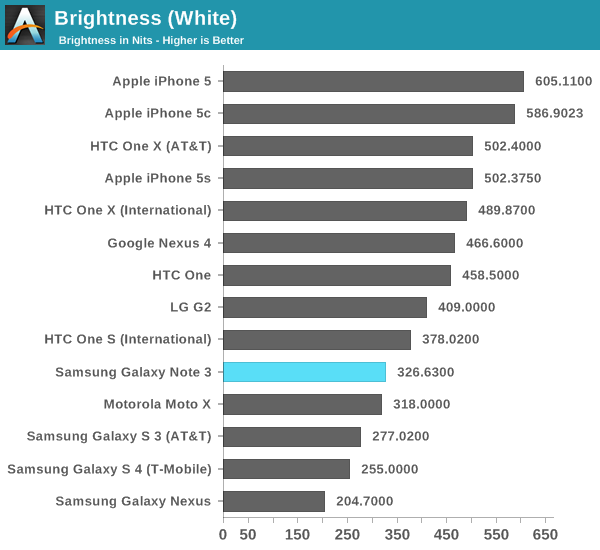
The Note 3 has the same display mode settings as we’ve seen in other generations, these mDNIe toggles allow some control over display color curves. They’re ultimately not a mitigation for Android’s lack of a real CMS and don’t completely solve the oversaturation issue that comes hand in hand with AMOLED’s different spectral curves, but they do help somewhat. These are unchanged as well from the SGS4 – Adapt Display is checked by default and will select which mode to use automatically for first party apps and a few others, but you can select between dynamic, standard, professional photo, and movie manually, which have different tunings for white point, gamut, and saturation. There’s also still the toggle for automatically adjusting screen tone depending on what’s being displayed.
Of the modes and configuration options available, I don’t doubt for a second that the most used one will be the defaults, however if you’re looking for the most sane from a color accuracy perspective it’s still Movie mode with the auto screen tone toggle unchecked. I gave Samsung the benefit of the doubt and ran all my measures in Movie mode as a result, but also took saturation measures of the other modes so you can see the difference in gamut and saturation with what you get under those.

The Standard and Dynamic modes have a ton of oversaturation, extending far beyond sRGB. In Dynamic mode we can also see some compression going on at the higher saturation levels, effectively blowing out those colors even more, with the second to last point almost on top of the last point. Pro Photo mode clamps down gamut and makes saturation a bit more linear, but has some odd other artifacts that show up. With the Movie selection made, the Note 3 display is considerably more controlled and linear, and makes a dramatic difference in how everything appears on the Note 3 during normal use. If you care about display really this is the only setting you should be using.
White point in movie mode is still bluer than I’d like at an average of just over 7100K, but in the all important Gretag Macbeth patch test, Delta-E is pretty low and puts it among iPhone 5, HTC One, and G2 territory. The results under movie mode from the Note 3 are actually nicely controlled. It still isn’t perfect, but there’s at least been an attempt made to give users that option if they don’t want garish colors that might look great on a store display but not so great if you care about matching photos you’ve taken to a display or print later, or web content between desktop and mobile.
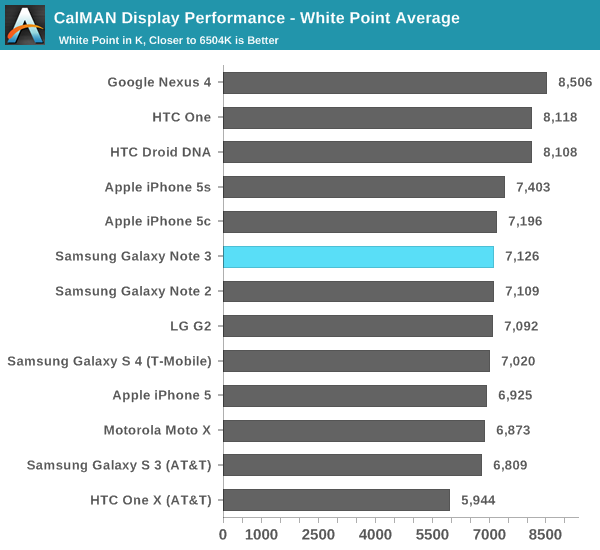
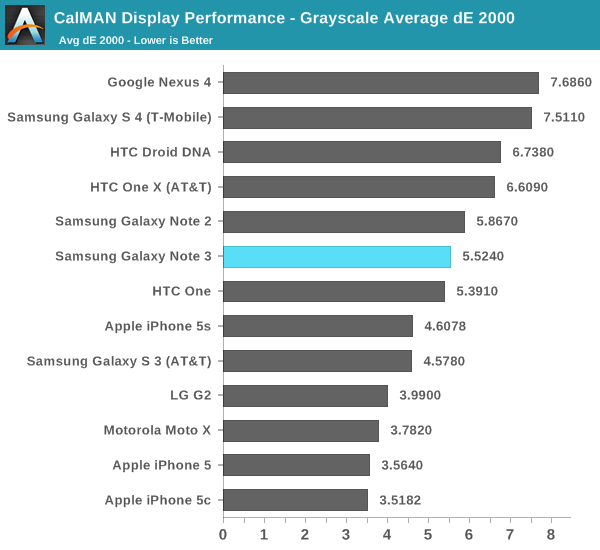
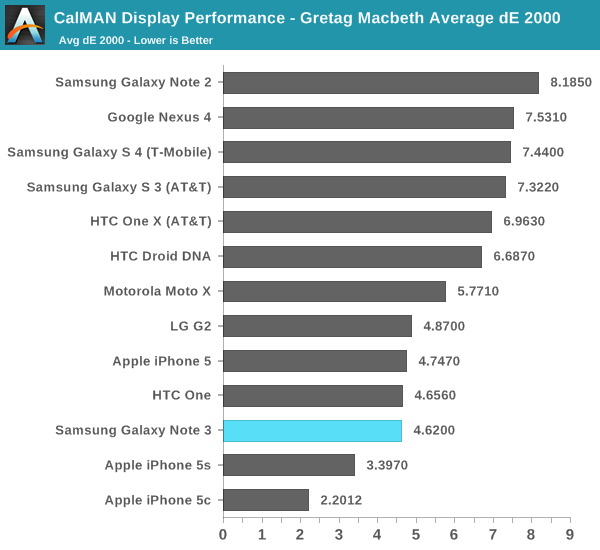
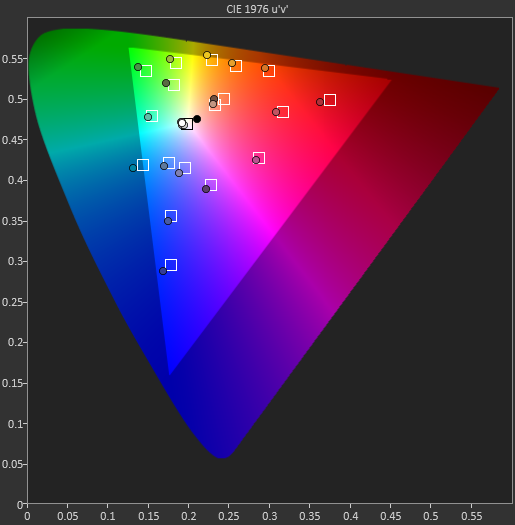
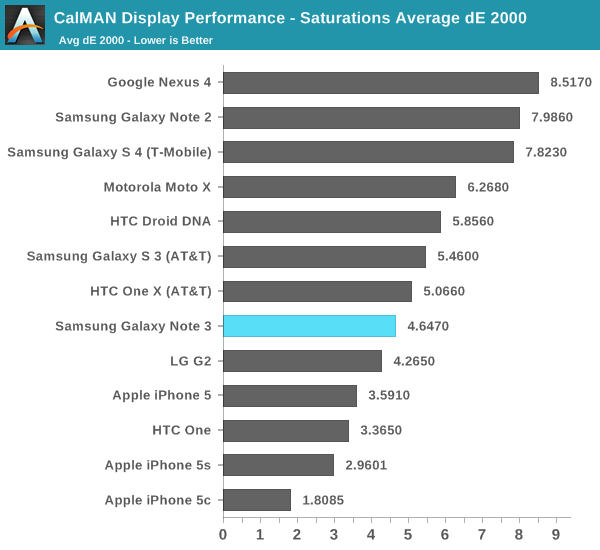



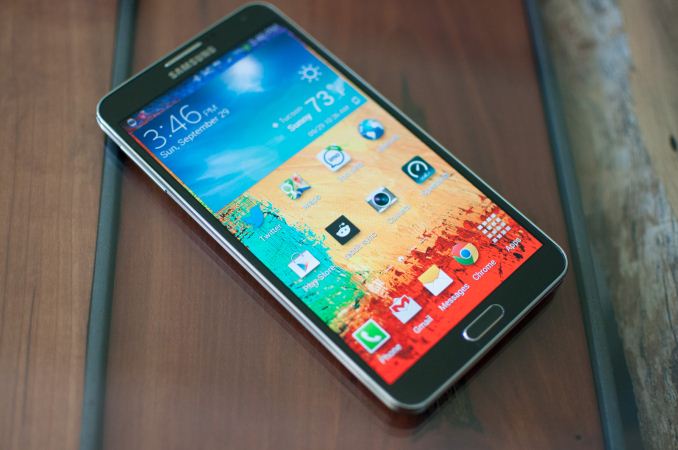
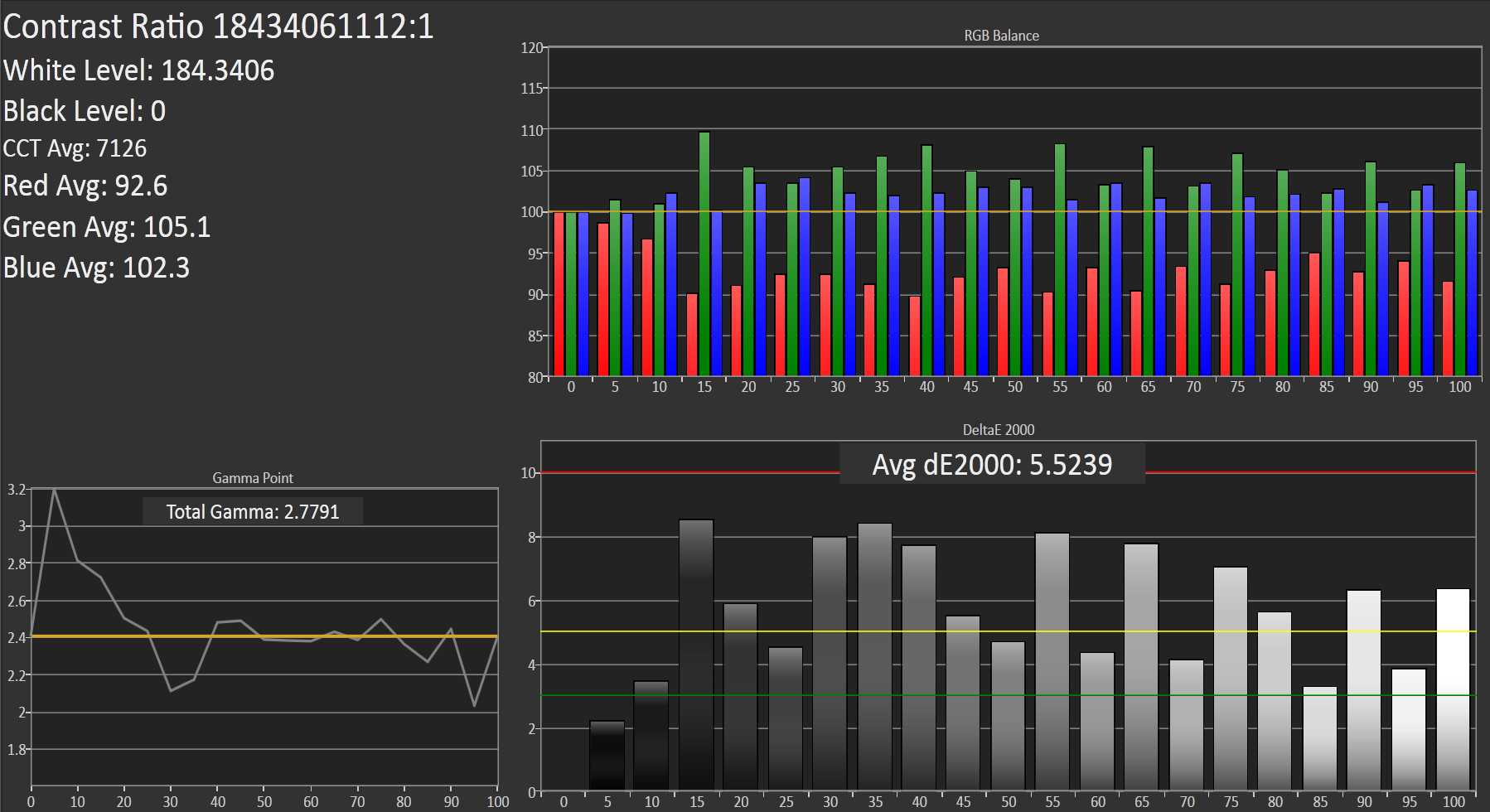








302 Comments
View All Comments
DukeN - Tuesday, October 1, 2013 - link
Anandtech is a prime example of this.The Apple products and news are covered in vast, but others are neglected based on personal opinion of some of the contributors IMO.
BB is a prime example. As much as I dislike Blackberry's last few products, Anand could have given them them the courtesy of a single BB OS 6 or OS 7 device review. Blackberry did have a 10 or 15% market share a couple of years back when the 9900 launched, but no writeups to be found here.
joe_dude - Tuesday, October 1, 2013 - link
Yeah, I've started to checking to see if I'm reading an American review. Even the British and Aussie reviews are not so ridiculously biased. I remember reading a comment a few days ago that it's because all American journalists use Apple stuff, hence the inherent bias.djboxbaba - Tuesday, October 1, 2013 - link
Wait... "Anandtech is a prime example of this".Anandtech? the same site that has been bashed in the previous comments, for not being harsh enough on Samsung for artificially inflating benchmark scores? What are you talking about.
identity - Tuesday, October 1, 2013 - link
A lot of these clones are from other sites, infiltrating it with their garbage. They trash whatever sites their own and will hop on anybody's at the moment. A couple months ago when Eric Snowden came out as the NSA leaker, the whole Ars community was pissed at Ars for releasing info on Snowden's past Ars history. Now, they're the toast of the internet world today.Spunjji - Tuesday, October 8, 2013 - link
Historically there have been a lot of instances where devices are criticised simply for being different from Apple in an objectively benign way (see any conversation about how notebook keyboards feel). Similarly, anything the devices do well tends to be referenced in comparison to Apple as well. It's nice to see that approach being phased out.Spunjji - Tuesday, October 8, 2013 - link
Bear in mind that you're also comparing the reaction to an article released in the last week to historical judgements of a site built up over years. So your comparison is inherently disingenuous at best...djboxbaba - Tuesday, October 1, 2013 - link
Yeah it only beats the Note 3 in all 4 CPU benchmarks tested here. This is also the Note 3 which is artificially inflating benchmarks. Objectivity prevails, maybe you should try it sometime instead of drinking the kool-aid.ddriver - Tuesday, October 1, 2013 - link
There is no cheating here, it is nothing like the intel compiler "preferential" compilation, nothing like the image quality cheats of ATI and NVIDIA, it is just a quick hack to make sure the CPU runs at its top frequency while a particular test is running, because this way you can get clear idea of the actual performance when not obstructed by power-saving features.This hack doesn't make the CPU appear faster than it is. This is just as much cheating if you go to your bios and disable power saving features and run a benchmark. No test result database rejects results obtained by such means.
klagermkii - Tuesday, October 1, 2013 - link
People minded it a lot less on desktop benchmarks because an average user could legitimately turn those power saving options off for their everyday PC usage, and enjoy that same speedup across all applications. The Samsung cheat only applies to benchmarks.Spunjji - Tuesday, October 8, 2013 - link
I thought benchmarks didn't matter?